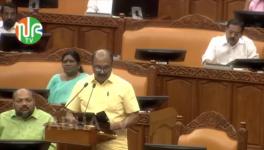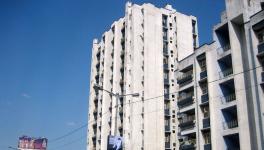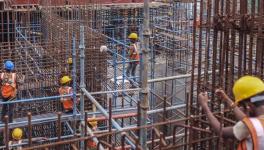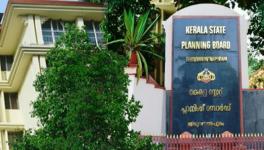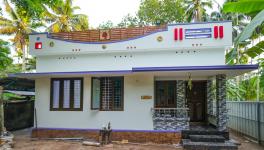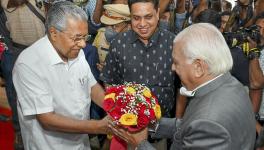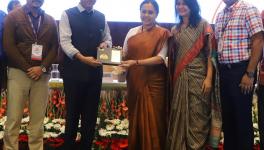Did the LDF Fulfill its 2016 Election Promise of a ‘Nava Kerala’?
With elections to the Kerala Assembly due in April this year, the developmental activities of the current Left Democratic Front (LDF) government has been made the centre of discussion in its campaign. The government, which had come to power in May 2016, promised a Nava Kerala (New Kerala) and has focussed on policies that have changed the face of the state.
Ahead of the 2016 elections the incumbent Chief Minister Pinarayi Vijayan had led a yatra called ‘Nava Kerala Yatra’. The yatra promised hope at a time when the Congress-led United Democratic Front government was mired in corruption.
“The Nava Kerala Yatra will provide a new path for development,” Vijayan had promised then, adding that Kerala should remain secular and that only then could it moveforward. As promised, the LDF government had launched its ‘Nava Kerala Karma Padhathi’ also known as the Nava Kerala Mission.
The umbrella project consisted of comprehensive development in housing, health, education and agriculture. On November 10, 2016, the mission was launched by the then Governor of Kerala and Vijayan, who aimed to put the state’s growth on the map.
The four missions under the Nava Kerala project are Haritha Kerala, Aardram, Life and Public Education Rejuvenation missions.
Life Mission
Promising a safe and secure house, especially for the homeless, the LIFE (Livelihood, Inclusion, Financial, Empowerment) Mission has resulted in the construction of over 2.5 lakh new homes. The Mission had envisaged total housing for all the homeless in the state and did not only involve providing them with a roof over their heads, but a complete rehabilitation package.
As of February 1, 2021, as many as 2,51,684 houses were built under the mission. The government also has plans to construct additional 1.5 lakh new houses this year as the state moves closer to a goal of a zero-homeless Kerala.
“Owning a home...is a dream of any human being. One of the most significant goals of this government was to stand with people to make this dream a reality,” Vijayan said while declaring the completion of 2.5 lakh houses under the scheme. Calling the LIFE Mission an “unparalleled housing development project,” the CM said it was an example of the government’s vision of how development should be done.
The Life Mission is being implemented in three phases across the state. The first phase focused on completing houses that had been left unfinished under various schemes between 2000-01 and 2015-16. A total of 52,613 houses were completed out of 54,173 as of February 1 this year with the government spending over Rs 670 crore in the phase, according to government data. The second phase focused on building houses for families that own land. Out of the 92,213 families that had applied for government assistance 87,819 houses have already been built.
The third phase of the mission focused on building houses for landless families with the government expected to find land and build apartments. A total of 1,35,769 beneficiaries have been identified for the phase and 3,382 families have been given houses as of February 1.
As many as 64,250 houses were also built under the Pradhan Mantri Awas Yojana (PMAY) Urban scheme and 17,149 houses were built under the PMAY Rural scheme. The state contributes a share alongside the Centre for this scheme and 19,987 houses under the department of Scheduled Castes, 2,095 houses under Scheduled Tribes and 4,389 houses under the fisheries department have also been completed as per the Life Mission report released on February 1 this year.
Aardram Mission
The Aardram Mission was launched in February 2017 with the objective of completely transforming the public health sector in the backdrop of the Sustainable Development Goals (SDGs) 2030 of the United Nations (UN). The primary focus of the mission was ‘Good Health and Well-being’.
The mission’s objectives included People-friendly Outpatient Services, ee-engineering Primary Health Centres (PHCs) into Family Health Centres (FHCs), access to comprehensive health services for the marginalised/vulnerable population and standardisation of services from primary care settings to tertiary settings.
As per the health department the main focus was “on the PHC to FHC transformation aspect of Mission Aardram, which is a phased series of infrastructural and administrative changes. Strengthening primary care and improving the quality of service provision largely focuses on infrastructural improvements, human resource training, record management through the e-Health system, improved laboratory facilities and more preventive rather than curative outlook towards healthcare service provision (sic).”
The PHCs in Kerala fall under local self-governing bodies according to the Panchayat Raj Act of 1994. “Community Participation is an important characteristic of a Family Health Centre, especially in the more rural FHCs as they bring the community together to work towards improving the quality of living in the area through its different forums,” it added.
Public Education Rejuvenation Mission
The Public Education Rejuvenation Mission aimed at upgrading all classrooms to an international standard and setinng-up Hi-Tech IT labs. The Kerala Infrastructure and Technology for Education (KITE) was assigned the task with funding from the Kerala Infrastructure Investment Fund Board (KIIFB). The mission aims to regain lost public trust in government and state-aided schools, and provide free education to the entire student population of Kerala.
As part of the mission a total of 42,000 classrooms for classes 8 to 12 have been equipped with laptops, projectors, screens and networked with school studios. It has been ensured that all lower primary and upper primary schools have at least one smart classroom with a computer lab.
Comprehensive educational reforms including upgrading 1,000 government schools to international standards was one among the election promises of the LDF in 2016. The reforms aimed to focus on improving infrastructural facilities, but also on teaching and learning, aligning them to present-day needs by introducing Information and Communication Technology (ICT)-enabled learning and smart classrooms. A special focus was also given to creating educational programmes for differently-abled students.
Under the mission, each government school with over 1,000 students will get up to Rs three crore for basic infrastructure development. State-aided schools will get government support of up to Rs one crore for the same and an equal share of money would have to be raised by the management.
The mission also aims to redefine the existing classroom learning processand develop a ‘Janakeeya Vidyabhyasa Mathruka’, which roughly translates to ‘People’s Education Model.’ Through various programmes the mission brought together parents, politicians and the public on a single platform for developing public educational institutions across the state, the government had said earlier.
All 16,030 public schools in the state are now equipped with 1,19,055 laptops, 69,944 multimedia projectors, 23,098 projector screens, 4,545 LED TVs, 4,578 DSLR cameras, 4,720 Full HD webcams and 4,611 multi-function printers along with high-speed, broadband Internet connectivity to 12,678 schools, as per government figures.
Haritha Kerala Mission
The public-centric Haritha Kerala Mission had a multi-focal strategy including Hygienic Waste Management for effective waste disposal, soil and water conservation and Agricultural development with a special thrust on organic farming. The mission was designed to be implemented under the stewardship of the local self-governing bodies encompassing voluntary organisations, NGOs, social activists, environmentalists, students, youths and other discerning individuals and groups.
Under the mission polluted, dried up, disused, silted up watercourses have been restored and revived. Their maintenance, protection, and distribution have been entrusted to the People’s Forum. The activities and the performance of the Agencies and Departments in the spectrum of Hygienic Waste Management, Agriculture and Water Resources have also been coordinated with the local self-governing entities who extend the work to larger areas.
The missions, however, were the centre of controversy at times. During the initial investigation of the Thiruvananthapuram gold smuggling case, central investigative agencies have targeted the Life Mission’s ongoing flat project in Wadakkanchery in Thrissur.
The opposition Congress and BJP have targeted the Life Mission since. Later, the UDF leadership convenor and Congress leader, M.M. Hassan, had stated that they would scrap the Life Mission if they come to power. However, following public anger, the UDF had to make clear that they would go ahead with the mission even if they come to power.
How happy are the people of Kerala with these projects? The April 6 mandate will tell.
Get the latest reports & analysis with people's perspective on Protests, movements & deep analytical videos, discussions of the current affairs in your Telegram app. Subscribe to NewsClick's Telegram channel & get Real-Time updates on stories, as they get published on our website.










